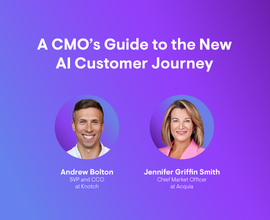The International Marketing Playbook
Expanding internationally can fuel new revenue growth and capture market share. Use this step-by-step guide to help you achieve global marketing success.
Expanding internationally can bring significant revenue uplift to a business. However, expansion can be fraught with pitfalls if not managed correctly.
Case in point: less than 50% of businesses’ international expansion efforts succeeded, according to a recent HBR analysis . The reason for these failures primarily boiled down to one thing: lack of preparation. A narrow vision, insufficient research, and limited follow-up after launch were notable shortfalls. Additionally, businesses that failed to meet expansion goals typically had over-standardized, rigid marketing practices that didn’t allow for agility or adapting to the local market and audience needs.
How can you avoid these limitations? This downloadable playbook walks you through the foundations of international marketing to help you jumpstart your expansion efforts and develop an international business strategy. You’ll learn the advantages of multi-national growth and gain essential insight on how to market in other countries.
Let’s dive in.
What is international marketing?
International marketing is the process of planning and executing the conceptualization, pricing, promotion, and distribution of goods and services across the world. As such, international or global marketing is a multi-faceted discipline that involves aspects of finance, production, communications, and sales. When engaging in international marketing, you adjust your marketing strategies to reach consumers, buyers, or users in other parts of the world.
Why is international marketing important?
Today’s world is more connected than ever, thanks to technology and infrastructure, which makes international growth more accessible for organizations. Businesses may gain significant potential advantages from global expansion, such as:
- Fueling next-level revenue growth. Many foreign markets provide a lucrative opportunity to gain new customers and sell more goods and services. Some countries have high populations and massive purchasing power. That said, reaching these markets may be resource-intensive, so targeting emerging markets first might provide a more sustainable growth trajectory.
- Extending reach beyond a saturated market. Although we live in a global economy, that doesn’t mean all international markets have the same level of maturity. A hotly contested market in the US may be developing in another part of the world. Instead of funneling resources and energies into competing in an oversaturated domestic market, businesses may find expansion brings more growth opportunities by entering a less competitive regional market. Plus, having traction in several countries can help an international business sustain growth even during economic uncertainty or recession.
- Staying competitive. Moving into a foreign market may be necessary to keep pace with competitors. If you’re an early-mover, your international expansion efforts can put you a step ahead. Larger enterprises that aim for industry or market dominance may see international expansion as an imperative.
Also, businesses that expand overseas can reap operational benefits at home . International businesses gain new competitive intelligence, develop cultural sensitivities, and adopt better management practices.
For example, when considering expanding into Europe, you need to know that the region has different cultures, languages, economies, and regulations. Your marketing needs to be attentive to all of these distinctions:
- Culture. Culture is the collective mindset and behaviors that distinguish one group of people from another. One resource for understanding culture is the Hofstede Model , which includes six dimensions of culture: power distance, individual vs. collectivism, tough vs. tender, uncertainty avoidance, long-term vs. short-term orientation, and indulgence vs. restraint. Understanding how different cultures reflect these values can help businesses know how to target and communicate with international audiences.
- Language. The European Union (EU) has 24 official languages , and each member country may have its own national language. As new members join, the EU may adopt new official languages.
- Economies. The EU operates as a single market and accounts for an estimated 15% of the world’s trade in goods . However, the gross domestic product (GDP) for EU member countries varies significantly. Recent statistics placed Germany’s GDP at nearly €3.6B, with the UK and France at approximately €2.5B GDP. On the low end of the GDP spectrum, Kosovo, Montenegro, and Lichtenstein all came in at under €10M.
- Regulations. Much like the US has both federal and state laws, regulations in the EU can be adopted at both the EU and national levels. The EU can legislate core activities such as business compensation rules and trade agreements. However, national governments can create laws related to the free movement of goods and capital, along with legislation tied to agriculture, consumer protections, and technology.
While you may have pan-European international marketing campaign objectives, you’ll need to adjust your messaging to each country you plan to market in. Your international marketing strategy shouldn’t be an afterthought but rather the driver of your expansion efforts.
11 Top tips to scale marketing in other regions
With modern technology, reaching people in other countries is easy—but that doesn’t mean marketing internationally is. You can’t take existing campaigns, run them in other markets, and expect to achieve the same results. Instead, you need a robust international marketing strategy that considers the unique languages and cultural nuances of every country where you aim to do business, along with regulatory and economic factors.
- Define success
- Create long-term objectives
- Conduct market research
- Identify market gaps and needs
- Clarify brand positioning
- Understand cultures, local languages, and privacy regulations
- Develop an international SEO strategy
- Test, fail, innovate, and repeat
- Create regionally-specific and relevant content
- Invest in customer experience
- Work with partners
Download the full International Marketing Playbook for exclusive global strategy insights and step-by-step instructions on each tip listed above. Leverage the findings of this playbook to advance your global marketing strategy and set your team up for greater success.







